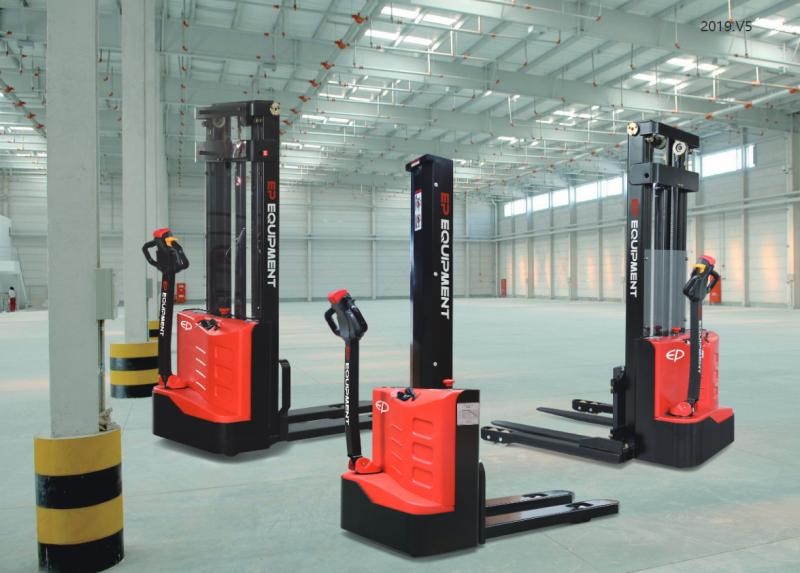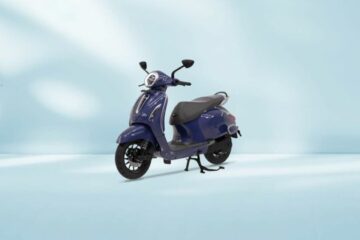Comprehensive Guide to Electric Stackers

Warehouse operations are different. Each warehouse requires a solution unique to its business model. These facilities also keep different types of inventory which may require specialized handling equipment. Pallet stackers are among the machines used to increase operational efficiency in warehouses. In the stackers industry, manual stackers have been the go-to equipment, but something that is changing.
As warehouses increase storage capacities, warehouse operators use electric stackers extensively to increase return on investment. They are comfortable and create a conducive environment for operators to use for long hours.
Here are more details about electric stackers and how warehouses can use them to improve business practices.
What are Electric Stackers?
An electric stacker is a handling equipment used for stacking pallets on racking systems. They operate similarly to diesel-powered stackers. The only difference is that they use batteries and have higher loading capacities. The configurations also allow smooth operations than hydraulic systems as they reduce the effort needed to lift bulky goods.
These are some advantages that have increased the demand for electric pallet stackers. Lithium-ion batteries are environmentally friendly, unlike fossil fuel-powered stackers that release more pollutants.
Uses of an Electric Stacker
Electric stackers increase productivity and streamline handling operations in warehouses. As the demand for more warehouse space increases, operators and managers are finding new ways to maximize space. More warehouses are utilizing floor space by building higher racking systems.
Although most loading and unloading tasks require forklifts, these vehicles could be more convenient for stacking. Pallet stackers can extend up to 13 meters high for precise placement of palletized SKUs. They also ensure convenient and efficient storage in narrow aisles due to their compact construction.
Types of Electric Stackers
· Standard Electric Stacker
Standard stackers have small wheels under the forks for maximum weight distribution. This fork design allows these stackers to lift heavy pallets simultaneously for smooth transportation and stacking. These stackers are ideally suited for bottomless pallets or containers.
· Counterbalance Electric Stacker
This type of stacker has a counterbalance weight that distributes the weight of pallets during transportation. They are efficient for stacking loads on narrow aisles. They are also longer than other stackers due to the size of the counterbalance.
· Walkie Straddle Stacker
Walkie straddle stackers have straddle legs for the distribution of load weight. They function by straddling the pallet closer to the load without consuming much space. A few stackers, like the Crown ES/ET 4000 Electric Stacker, are engineered precisely for poor working conditions.
· Ride-On Electric Stacker
Ride-on electric stackers are standard stackers with a platform and intuitive controls for the operator to ride on. Only trained personnel can operate these machines since they work like forklifts that require permits. They have precise control systems for the easy loading and offloading of palletized goods.
Benefits of Using Electric Stackers
· They are Adaptable
The nimbleness of electric stackers denotes their flexibility in warehouse operations. Different types of stackers with different carrying capacities are adaptable to meet storage demands. Modern stackers also have foldable pedestrian platforms for maximum comfort of the operators.
· Environmentally Friendly and Economical
Electric stackers have lithium-ion batteries that can retain charge for longer periods. They have no emissions that would negatively impact the environment. These batteries also charge faster and require minimal maintenance, saving energy and operation costs.
· Increased Productivity
Manual stackers are physically demanding because operators must pull and push them across different loading points. Such activities can lead to fatigue which affects the productivity of warehouse workers.
Material handling equipment manufacturers include pedestrian platforms that act as transport for the operators. They can comfortably stand on the vehicle during operations to reduce fatigue from controlling the machine.
· Improved Warehouse Safety
Operators and other warehouse employees are exposed to injuries when using manual stackers. This equipment strains the legs, arms, and joints and can lead to permanent back damage. Such issues would be fine with an electric stacker. In addition, the integrated systems are easy to operate with cutting-edge safety systems to prevent accidents or breakdowns.
· Better Visibility
Since these stackers are small-sized, they allow better visibility of the equipment an operator is loading. This design offers better performance when loading SKUs on racks above 3.5 meters. They reduce workplace hazards from collisions caused by poor visibility.
Why Choose an Electric Pallet Stacker?
Godrej’s assembly of electric pallet stackers features robustly designed machines adaptable for warehouse stacking needs. These stackers can lift 1.6 tonnes to heights above 3.6 meters.
Rechargeable batteries ensure efficiency and convenience to reduce reliance on physical labor. Operators can seamlessly stack various loads in narrow aisles without collisions.
Although finding the right pallet stacker needs some research, the details mentioned above provide enough guidance. With myriad options to choose from, warehouse operators and managers must align the search with the type of goods they handle regularly. They can use the equipment efficiently without maintenance concerns.










